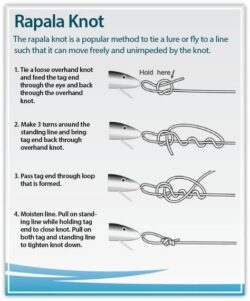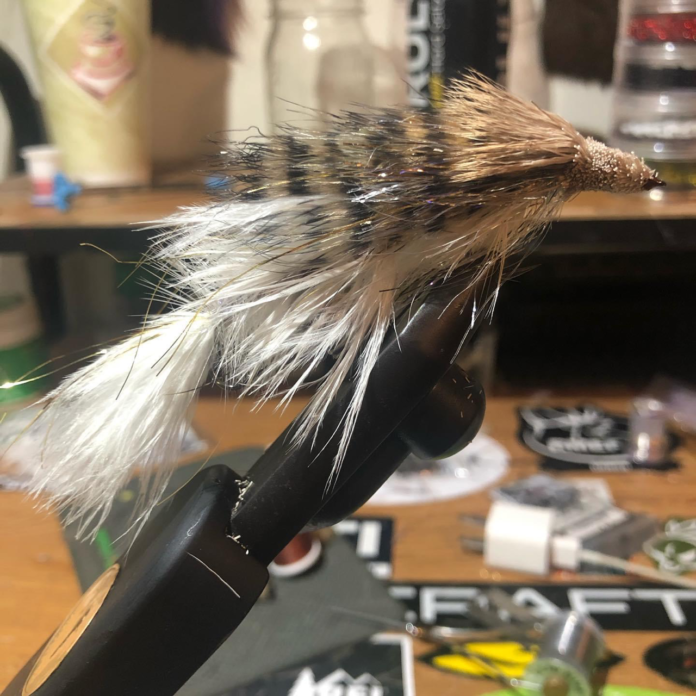Streamer fishing is a Fall thing. Big fish especially attack big streamers. As Winter approaches, fish feed to survive the cold and harsh season ahead. Tiny midges, larva, and nymphs are tidbits that don’t fill up a Big Trout.
If you can cast 20 feet, you can fish streamers. Big streamers are larger and heavier than smaller flies. A weight forward or one weight heavier line is helpful. Let the wind and current be your friend. If the streamer is getting washed down current, strip line off the reel and allow the distance to gro. Then begin the retrieve. The line will swim the fly. Watch for any strikes at any time.
Beginner streamer chuckers may want to consider wearing a big hat. Catching your head or ears is easy to do. You really need to monitor your casting skills and let the rod do the work. Always wear glasses. They will protect your eyes from a wayward streamer slap to the face or the harsh reflected light. In low light conditions, wear amber shooting glasses. You will be able to see fish and strikes more easily.
Streamer chucking is when you drag out the big meat stick. Larger weight rods have more backbone to cast big flies and fight bigger fish. Weight 7’s is a good place to begin. Reels with a good disc drag really help when playing a big fish. I also prefer a Multiplier reel to quickly get my excess line onto the spool in a hurry.
Cast across the stream currents and let the flow take your streamer downstream. Most of the strikes will happen at the bottom of the swing. If in a boat, cast toward the bank and retrieve more quickly. This mimics a meal that is escaping and trying to get away. Many big fish react and can’t resist.
When fishing a streamer, select streamers that are the size/ color of baitfish. Use enough weight to bounce the bottom and twitch the fly occasionally. Hold your tip just above the water and point the rod at the fly. Strip and twitch the streamer on the retrieve. If you feel any resistance, strike. Swim your streamer to mimic the movement of the bait fish. As conditions get colder, slow the presentation down.
Full moons mean that crayfish will shed or slough their shells. This is when you can dead drift a large streamer, that may mimic a crawfish. Large Wooly Buggers, Zonkers, Madonna’s, Girdle bugs, and Muddler Minnows will all look like a crawfish when dead drifted. This presentation also mimics a wounded or stunned easy meal.
Other Fall streamers include Deceivers, Closers, Marabou Leeches, even sculpin patterns. If the flies are not weighted, you can add a weighted sinking head or use sinking fly lines. Split shots make casting more difficult. Beef up your tippet. Straight tippet will work fine. Fluorocarbon 15 lg test tippet is the diameter of 6-8 lb. test mono. This will give you a clearer, stronger, and thinner tippet. Consider tying a Rapala knot to attach the streamer. This knot allows the fly to move more freely, since the tippet forms a loop rather than a snug connection to the fly.
Consider where the fish will be feeding in the colder waters. Tail outs are often good places to explore. Ambush edges where there are logs or rocks are also hot spots. Late evenings can be especially good fishing. Big fish will be lurking in slow moving waters on the edge of currents. Don’t be surprised to find big fish facing downstream in a whirlpool or back eddy. Good glasses will help you see the fish before you cast.
Big fish means a big net. Use a nylon web net with a longer handle. You will also get more hook ups if you routinely sharpen your hooks. This is important after getting snagged or bumping into rocks. Sharp points may bend and become dull. A little tune up from a diamond dust sharpener works wonders.
Strip it and rip it!
Montana Grant
Credit: Source link






























